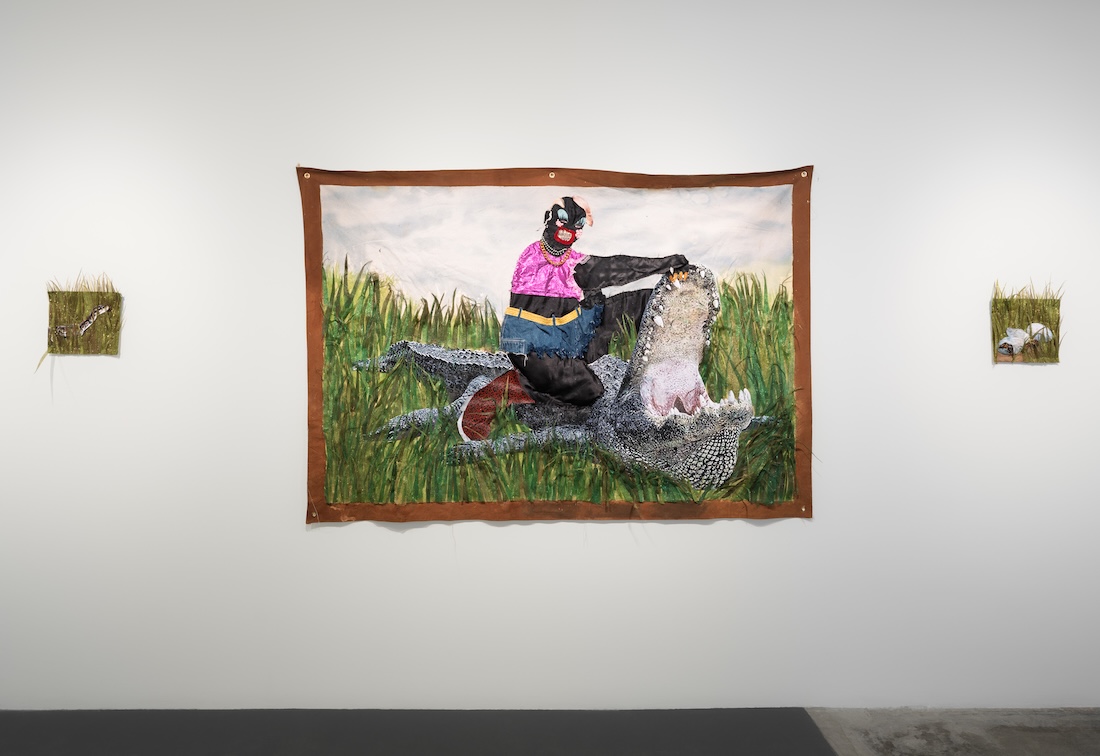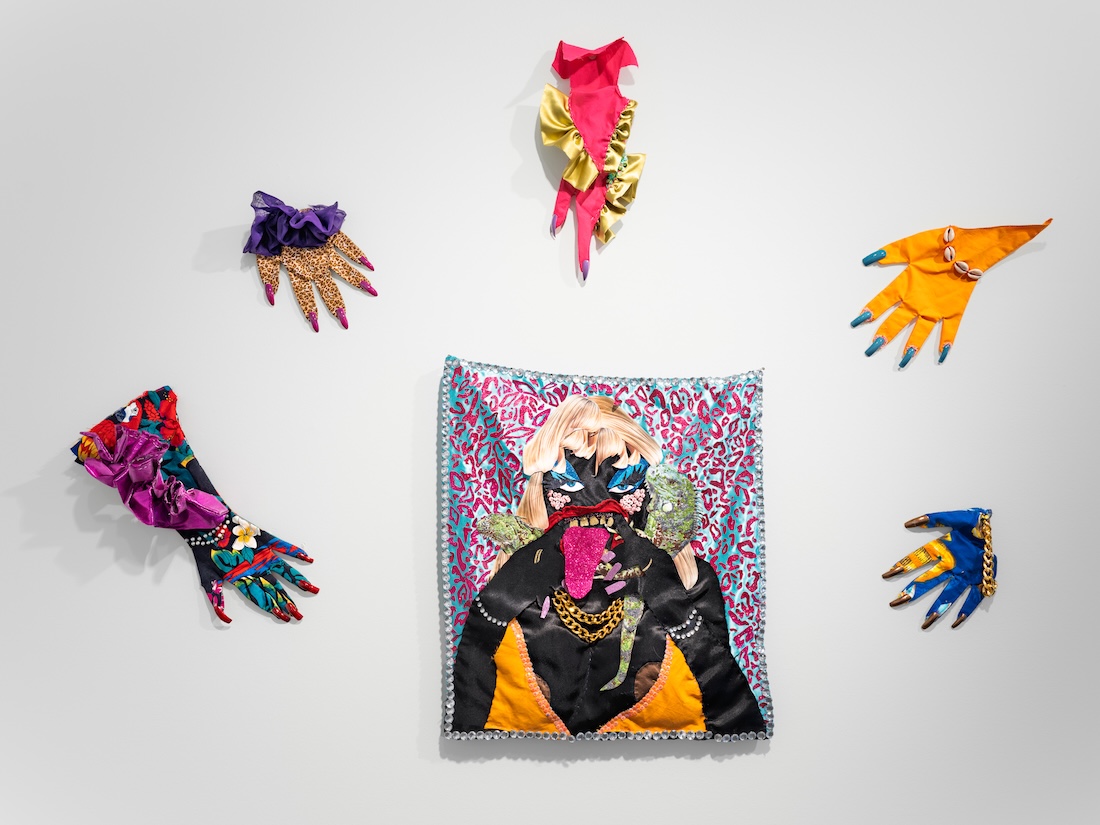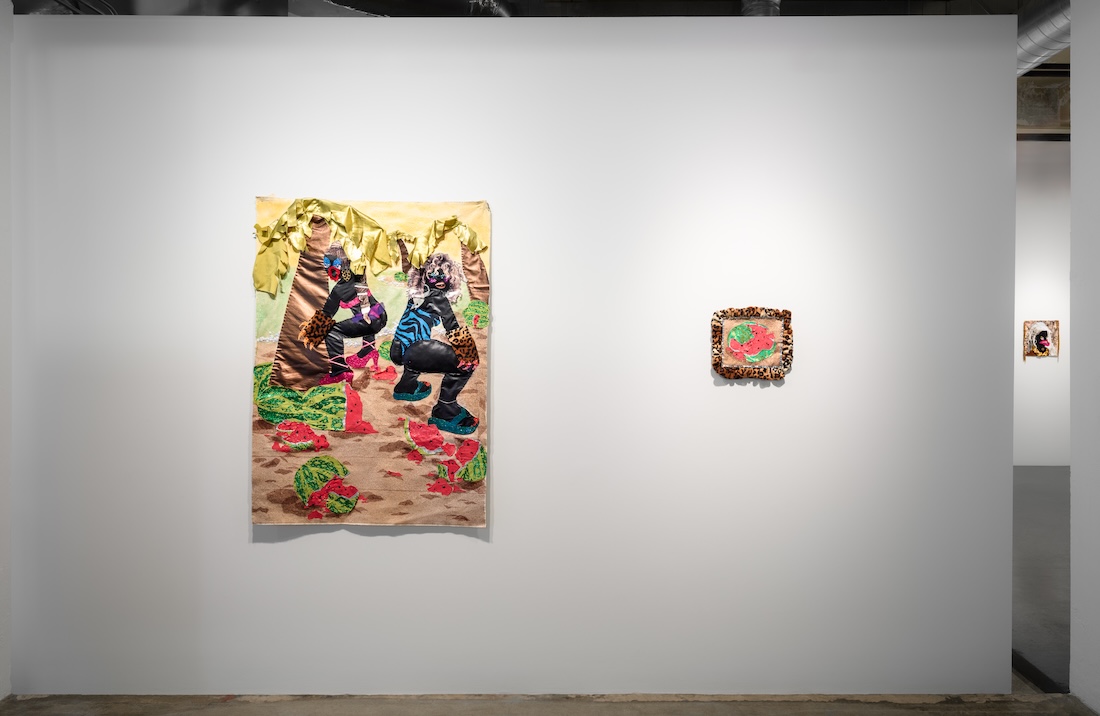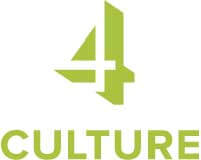Bold Challenge: Ric’kisha Taylor confronts culture and identity in Gleaming

When Ric’kisha Taylor was growing up in Miami, vibrant clothes, glitzy jewelry, exotic reptiles, and bright-colored cars with flashy rims were all defining features of the city’s visual culture. Her own family had a pet iguana for a time. Her dad wore bright green crocodile-skin shoes to church on Sundays.
Now the bold nature of Taylor’s hometown oozes out of her current Gallery 4Culture exhibition, Gleaming, which features more than a dozen of her sparkly collages and soft sculptures. Taylor herself generally tries not to stand out too much in subdued Seattle, “But I’m flamboyant on the inside,” she says. “And that’s what I want my ideas to look like on the outside.”
For the artworks in Gleaming, Taylor combined a medley of materials—from synthetic fabrics and artificial hair to rhinestones and glass seed beads. The majority of the pieces depict Black women in ways that Taylor intends to challenge the viewer. She wants you to look at what she’s made and reconsider what you think you know. She’s confronting stereotypes and expectations head-on.
“Most of the work that I do is a way for you to get so close to the stereotype that you think it’s racist in a way,” she says. “For instance, someone sees red lips on a darker skin and they’re like, I feel like this is minstrel show. But I’m like, you’re making it into that—there are dark women who wear red lipstick. There’s a little conflict.”

Taylor also questions assumptions about beauty and conformity in the exhibition—“especially with the blonde wigs and the blue eyes,” she says. To her, the things people wear, whether clothing, accessories, or makeup, are a way into thinking about identity. In “Lot Lizard,” for example, she explores the complexities of sex work and what it means to be a queer Black woman.
But Gleaming is also about finding freedom from identity and expectation. Taylor’s collage “Rather live with the gators” started as a rumination about how Indigenous people once lived in the swamps of Florida, disconnected from society and connected to the natural world around them. The piece became a way for Taylor to look for liberation in a world where “you can’t travel freely, you can’t grow your own food, and you have to pay the rent.”
“Today we’re held up against so many forms of harm that it’s kind of hard to feel like you’re one with whatever’s happening,” she says. “We have privileges and opportunities, but it’s more convoluted to be in community.”

Like “Lot Lizard” and “Rather live with the gators” Taylor’s artworks often start with a snippet of language. That phrase might spark a drawing or a search for online images before she starts staging the canvas and experimenting with her materials. “After that, it’s just deciding what each figure may need,” she says. “Does this one need a pattern? Are the [sparkling] crocodile tears enough?”
To sufficiently embellish the pieces in Gleaming, Taylor made frequent use of the peyote stitch, aka the gourd stitch, a bead weaving technique with roots in Indigenous America and ancient Egypt; Taylor learned it in a workshop with renowned Black American artist Joyce J. Scott while she was a student at Cornish College of the Arts. “At first I thought it was just a 2-D form, but you can build it into a 3-D or 4-D type of material,” she says.
“I’m kind of obsessed,” she continues. “Now I find beads on my dining table. I find them in my food!”
Gleaming is on view through Feb. 27.
